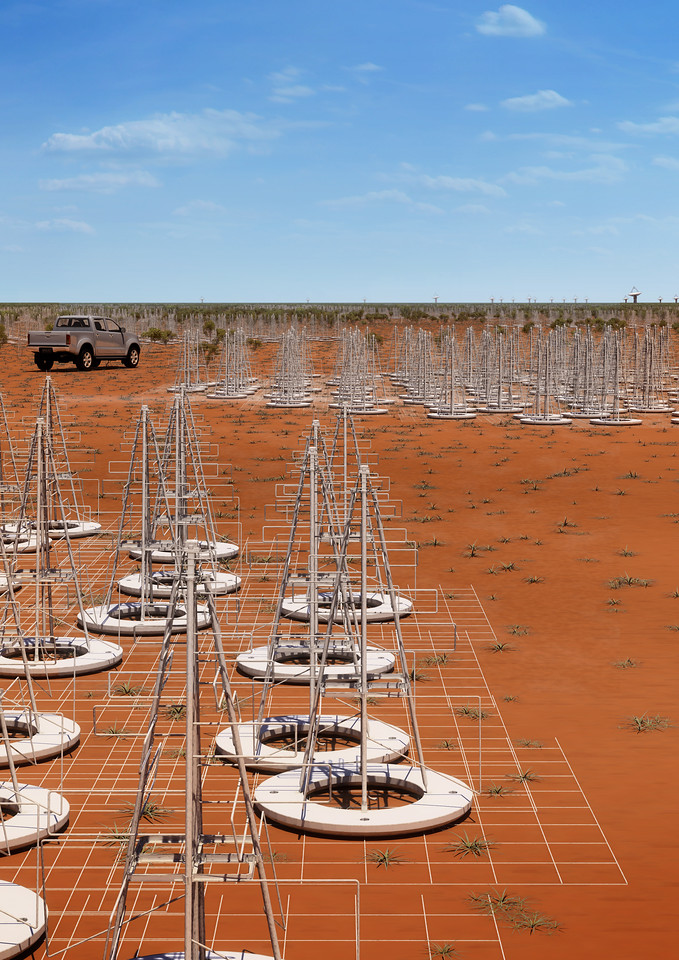Satellite build gets going
 Big steps forward this week for one of humanity's greatest scientific projects, the Square Kilometre Array Observatory (SKAO) in WA.
Big steps forward this week for one of humanity's greatest scientific projects, the Square Kilometre Array Observatory (SKAO) in WA.
The installation of the first antennas for the SKA-Low telescope in Western Australia's Mid West, on Wajarri Country, took place this week.
The telescope, alongside its counterpart SKA-Mid in South Africa, is part of a global effort to reshape our comprehension of the Universe.
The installation of the distinct, Christmas tree-shaped antennas, standing two metres tall, marks a pivotal moment for the SKA-Low radio telescope. When complete, it will be made up of over 130,000 antenna units.
The device should offer insights into the Universe's first billion years, shedding light on the emergence of the very first stars and galaxies to coalesce into existence.
“Astronomers have been dreaming of this project for decades. To see the antennas that make up the SKA-Low telescope finally on the ground is a proud moment for us all,” said SKAO Director-General Prof Phillip Diamond.
The project's scale and technological ambition are unprecedented.
According to Dr Sarah Pearce, Australia-based SKA-Low Telescope Director, the SKA telescopes will function like “time machines”, unveiling cosmic phenomena previously unseen by humanity.
“The SKA-Low telescope in Australia will be able to map the sky more than 100 times faster than other state-of-the-art telescopes,” Dr Pearce said.
SKAO and CSIRO have ensured that the Wajarri Yamaji People, the land's traditional owners, are not left behind. The collaboration has seen the launch of a training programme for field technicians, with seven Wajarri community members among the new hires.
This initiative not only aims to construct the telescope but also to enhance long-term employment opportunities within the community.
CSIRO Chief Executive Dr Doug Hilton and Wajarri Yamaji Aboriginal Corporation CEO Jamie Strickland have both emphasised the importance of collaboration and the project's role in promoting Wajarri Yamaji People's cultural heritage and employment prospects.
The SKA project, expected to be completed by the decade's end, symbolises a merging of traditional knowledge and modern science, a testament to the enduring significance of observing the cosmos, an activity the Wajarri Yamaji People have engaged in for millennia.
Prof Diamond said the new technology would allow the world to join the journey of the Wajarri Yamaji, who have been “observing the skies and stars from this location for tens of thousands of years”.
More details are accessible here.








 Print
Print